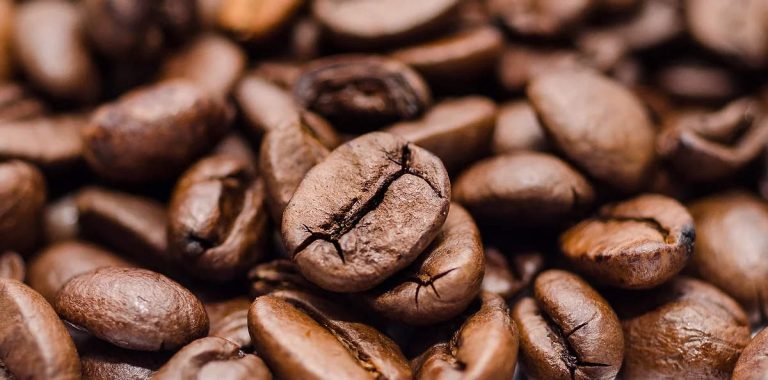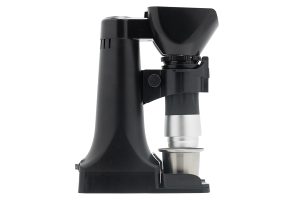Espresso Guide
Coffee Beans and Espresso: The Basics

Introduction
Contrary to popular belief, espresso is not a specific type of coffee bean. When you see a package of coffee listed as “espresso,” it only means that the coffee roaster recommends that blend for use in an espresso machine. In general, any roasted coffee can be used in any type of extraction method, including espresso.
Types of Coffee Beans
While coffee beans differ in size, caffeine content, terroir and processing, they will fall into one of two species of the Coffee genera: Arabica and Robusta. So, in the context of Arabica vs Robusta, who would win in terms of the best tasting coffee? Most will overwhelmingly say that Arabica is the higher quality and better tasting bean, but it’s absolutely up to your preference. Some of the major differences are below:
- Arabica – Historically considered to be the higher quality and better tasting coffee, Arabica requires higher altitudes for growing, more moisture and the plants are more susceptible to damage. When compared to Robusta, Arabica is lower in acidity, lower in caffeine, and generally has a smoother and more delicate flavor. In lighter roast levels, Arabica can take on many different flavors from floral to sweet and fruity.
- Robusta – Long considered around the world to be of a lower quality, Robusta typically grows in a wider range of climates and altitudes making it a more resilient, higher yield coffee plant. Robusta can have a higher caffeine level (almost double!) and higher acidity, contributing to a flavor profile that most consider to be harsh. About 40% of coffee grown around the world is Robusta, and is traded on a completely different market than Arabica coffee.
Where Does Coffee Come From?
Based on the volume of genetic diversity found in heirloom and natural growing coffee varieties found in Ethiopia, it is considered to be the progenitor of Arabica Coffee. Today, coffee grows all across the world, but mostly along the equator and between the Tropics of Capricorn and Cancer. Brazil exports the largest volume of coffee, followed by Vietnam and Colombia. Regardless of where it is grown, coffee is actually the seed inside of the fruit of a coffee tree, not a bean at all! Coffee will take on different tasting notes and characteristics depending on the soil and climate of where it is grown, but also how it is processed once it is harvested off of the tree. The three most popular ways to process coffee are washed process, natural process, and honey process and are differentiated by when the coffee skin and pulp are removed from the seed during the drying process. Each process will drastically change the coffee’s flavor. This is part of what makes coffee tasting so diverse and fun!
What Are Roast Profiles and How Does It Impact Taste?
Pre-brewing, one of the most important factors in terms of the taste of your coffee, is the level of roast that your beans have undergone. In the past, and when coffee was originally gaining popularity across Europe, the trend was to roast darker as a strategy to hide or minimize defects in the coffee, resulting in a burnt and sometimes flame-roasted taste. Today, with more attention being put on quality throughout the supply chain in the craft coffee world, most independent cafes and roasters focus on lighter and medium roasts to bring out more of the local and inherent flavor of the beans themselves. In general, there are three major roast profiles: light, medium and dark.
- Light Roast – Lightly roasted beans are higher in acidity than their darker roasted counterparts, and usually have a light floral or fruity flavor. Light roasting is done to maintain the flavor profile of the original bean, and to ensure that those flavors are not overpowered by the roasted flavor itself. These beans are also lighter in color and will feature a floral or fruity smell when opening the bag. Because these beans are lightly roasted, they will also appear quite dry because the beans haven’t been roasted long enough to extract many oils. This will make the beans harder. You’ll notice this difference in hardness when grinding for espresso, especially with hand grinders such as our Royal. Finally, lighter roasts will also have a lower amount of crema, again due to the roast level. When brewing espresso, especially with the Flair, light roasted beans are not very forgiving to under extraction, and usually require a higher temperature of brew water around 205 degrees F (96 degrees C).
- Medium Roast – Generally accepted as the most prevalent roast level of coffee today, medium roasted beans usually have a flavor profile that combines fruit like orange, apricot or cherry, and roasted flavors like chocolate – but really, there are hundreds of flavors! Medium roasted beans usually have a more balanced flavor and lower acidity, when compared to light roasted beans, will be easier to grind, and a bit more forgiving when dialing in your Flair.
- Dark Roast – Dark roasted beans will be, you guessed it, dark! The beans will also appear and feel oily, as the longer development and heat allows the oils held within to be driven to the surface. These roast levels are typically linked to Italian roast and French roast coffees and don’t feature many, if any, of the original flavors of the bean or its origin. These beans will feel easy to grind as compared to the light and medium roasts, and will be more forgiving – because the flavor profile is a bit burnt! Dark roasts can also be brewed at lower temperatures between 195 to 200 degrees F (90-93 degrees C). Darker roasts stale faster because the larger pores that develop allow water and moisture to more easily penetrate during storage.
Coffee Requirements for Brewing with Your Flair
Always start with whole coffee beans that were roasted within a few weeks of purchase. The act of grinding immediately releases the volatiles and aromas, and dramatically accelerates the oxidation and staling of your coffee. It is imperative that your whole beans are not ground until minutes before brewing. This will ensure the highest quality, best flavor and the most crema. Additionally, pre-ground beans will never yield good crema as the grind will typically be too coarse to hold back adequate pressure, and all the crema-producing CO2 the beans once had will have been liberated.
Try to start with coffee that the roaster has designated as good for espresso. These will have been developed to exhibit the best qualities and flavors of the coffee when brewed under pressure and extracted as a concentrate.



